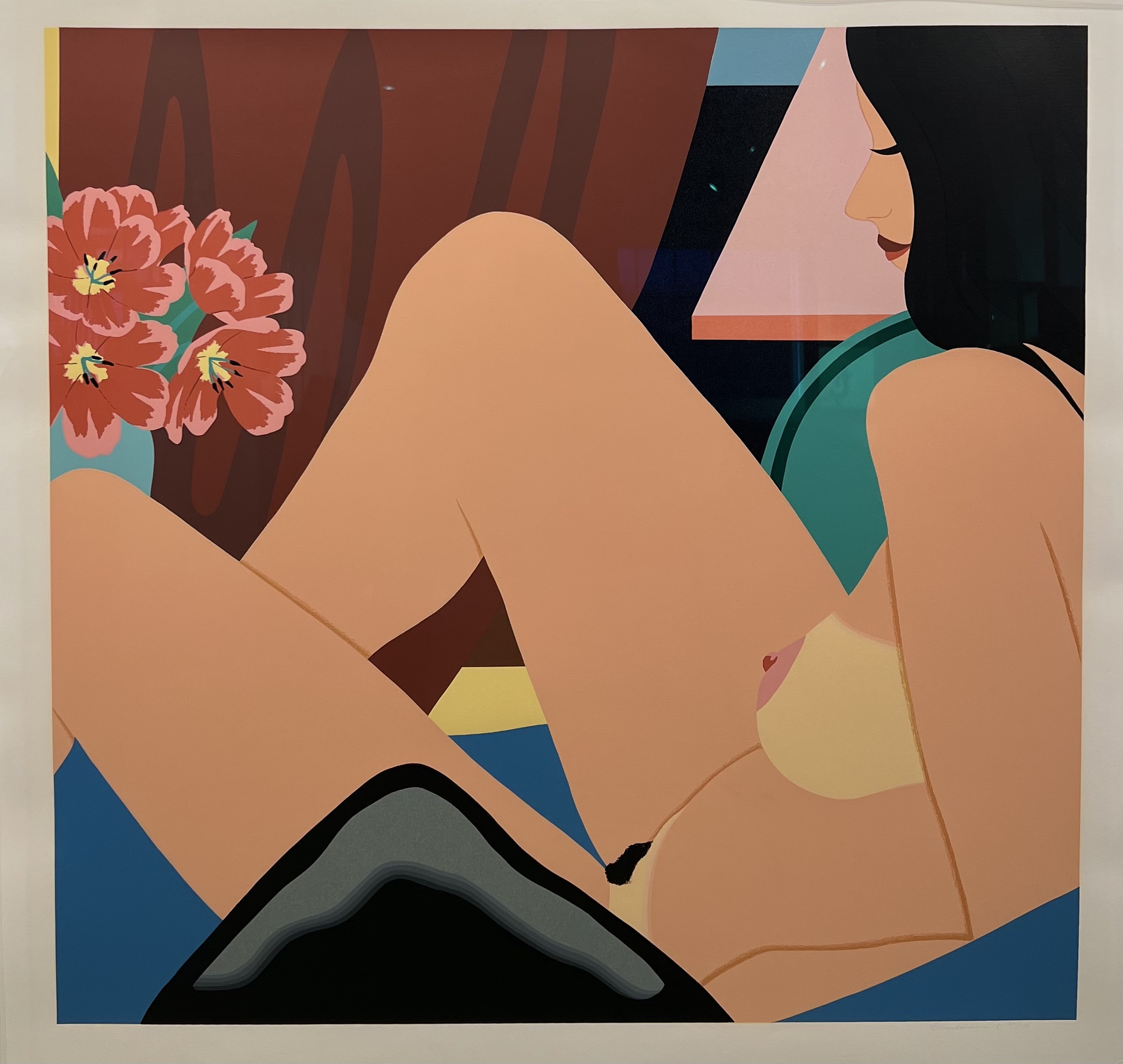Tom Wesselmann
Thomas K. Wesselmann (February 23, 1931 – December 17, 2004) was an American artist associated with the Pop Art movement who worked in painting, collage and sculpture.
After graduation, Wesselmann became one of the founding members of the Judson Gallery, along with Marc Ratliff and Jim Dine, also from Cincinnati, who had just arrived in New York.
He and Ratliff showed a number of small collages in a two-man exhibition at Judson Gallery. He began to teach art at a public school in Brooklyn, and later at the High School of Art and Design.
Wesselmann’s series Great American Nude (begun 1961) first brought him to the attention of the art world. After a dream concerning the phrase “red, white, and blue”, he decided to paint a Great American Nude in a palette limited to those colors and any colors associated with patriotic motifs such as gold and khaki.
The series incorporated representational images with an accordingly patriotic theme, such as American landscape photos and portraits of founding fathers.
Often these images were collaged from magazines and discarded posters, which called for a larger format than Wesselmann had used previously. As works began to approach a giant scale he approached advertisers directly to acquire billboards.
Through Henry Geldzahler, Wesselmann met Alex Katz, who offered him a show at the Tanager Gallery. Wesselmann’s first solo show was held there later that year, representing both the large and small Great American Nude collages.
In 1962, Richard Bellamy offered him a one-man exhibition at the Green Gallery. About the same time, Ivan Karp of the Leo Castelli Gallery put Wesselmann in touch with several collectors and talked to him about Roy Lichtenstein and James Rosenquist’s works. These Wesselmann viewed without noting any similarities with his own.
The years following Wesselmann’s death were marked by a renewed interest in his work. Museo d’Arte Contemporanea Roma (MACRO) exhibited a retrospective in 2005, accompanied by a comprehensive catalogue.
The following year L&M Arts in New York held a major exhibition of works from the 1960s. Two galleries; Maxwell Davidson and Yvon Lambert, jointly showed the Drop-Out series in New York in 2007. This coincided with the release of a new monograph on the artist, written by John Wilmerding and published by Rizzoli, Tom Wesselmann, His Voice and Vision.
Wesselmann was a self-described fan of country music, and sometimes incorporated operating radios, TVs, or other sound elements into his works.
A retrospective show Tom Wesselmann und die Pop Art : pictures on the wall of your heart (2008–2009) at Städtische Galerie in Ravensburg, Germany featured music recordings of his band, courtesy of his estate.
Another show, in 2010 by Maxwell Davidson, Tom Wesselmann: Plastic Works, was the first ever survey of Wesselmann’s work in formed plastic.
A lifetime retrospective of drawings, Tom Wesselmann Draws, was shown at Haunch of Venison Gallery, New York, and then traveled to The Museum of Fine Art, Fort Lauderdale, FL, at Nova Southeastern University, and The Kreeger Museum in Washington, DC.
A lifetime retrospective, the first in North America, opened at The Montreal Museum of Fine Arts in May, 2012, and travelled to the Virginia Museum of Fine Arts, and the Cincinnati Art Museum.

